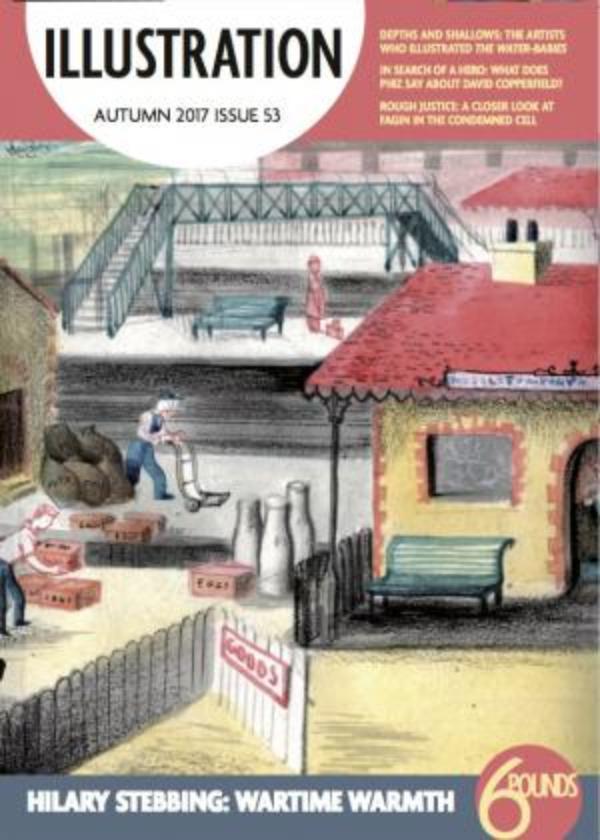
Illustration - Autumn 2017 - Issue 53
Illustration Autumn 2017 Issue 53
Cover
Hilary Stebbin 'The Station' gouche and crayon artwork for poster, Child Education (1947)
Charles Dickens and long, dark evenings go together like crumpets and butter. This issue we invite you to settle down by the fire and look more closely at two of Dickens’s best-loved novels and, in particular, at illustrations by his two most famous illustrators, George Cruikshank and Hablot Knight Browne (Phiz). Crime and punishment emerges as a theme as we look at Cruikshank’s depiction of “Fagin in the Condemned Cell” from Oliver Twist and we consider what the artist is telling us about the emotions of this formerly ebullient character as he faces the hangman. This is a psychological as well as a dramatic illustration that helps to illuminate the man and his situation and works on the emotions of the reader. Similarly Phiz’s pictures for David Copperfield do more than merely depict dramatic moments in the text. We ask what they tell us about the moral strength and character of David and whether these images would have helped Victorian readers to make up their minds about whether he lives up to his own aspirations to be a true hero, as they would have understood the word.
Moral fibre, crime and punishment are also key themes in Charles Kingsley’s strange, multi-layered fable The Water-Babies. However, (maybe unsurprisingly) few illustrators have chosen to tackle the more difficult, philosophical themes the novel addresses – child labour, corporal punishment and evolutionary theory. Instead, most have chosen to depict the “pretty” scenes of children playing in the shallows, and fairies dispensing discipline and sweets. We compare some of the best and ask what they contribute to the text.
There is nothing wrong with illustration that is purely decorative, but pictures that work best with the text – and which truly enhance and illuminate it – tend to offer something more: atmosphere, psychological drama, humour or social comment, for example. Our own imaginations are powerful tools, but pictures can evoke deep emotional responses, challenge our understanding and add another perspective that can give us new insights and work into our memories. Many of us remember the books we read as children through their illustrations. We hope you enjoy rediscovering these classics and find something new in old favourites this autumn.

